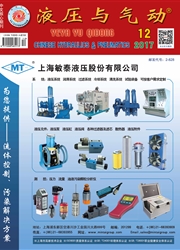

 中文摘要:
中文摘要:
The effect of temperature on the dynamics of a laser-induced cavitation bubble is studied experimentally. The growth and collapse of the cavitation bubble are measured by two sensitive fiber-optic sensors based on optical beam deflection (OBD). Cavitation bubble tests are performed in water at different temperatures, and the temperature ranges from freezing point (0 °C) to near boiling point. The results indicate that both the maximum bubble radius and bubble lifetime are increased with the increase of temperature. During the stage of bubble rapidly collapsing in the vicinity of a solid surface, besides laser ablation effect, both the first and second liquid-jet-induced impulses are also observed. They are both increased with liquid temperature increasing, and then reach a peak, followed by a decrease. The peak appears at the temperature which is approximately the average of freezing and boiling points. The mechanism of liquid temperature influence on cavitation erosion is also discussed.
 英文摘要:
英文摘要:
The effect of temperature on the dynamics of a laser-induced cavitation bubble is studied experimentally. The growth and collapse of the cavitation bubble are measured by two sensitive fiber-optic sensors based on optical beam deflection (OBD). Cavitation bubble tests are performed in water at different temperatures, and the temperature ranges from freezing point (0 ℃) to near boiling point. The results indicate that both the maximum bubble radius and bubble lifetime are increased with the increase of temperature. During the stage of bubble rapidly Collapsing in the vicinity of a solid surface, besides laser ablation effect, both the first and second liquid-jet-induced impulses are also observed. They are both increased with liquid temperature increasing, and then reach a peak, followed by a decrease. The peak appears at the temperature which is approximately the average of freezing and boiling points. The mechanism of liquid temperature influence on cavitation erosion is also discussed.
 同期刊论文项目
同期刊论文项目
 同项目期刊论文
同项目期刊论文
 期刊信息
期刊信息
